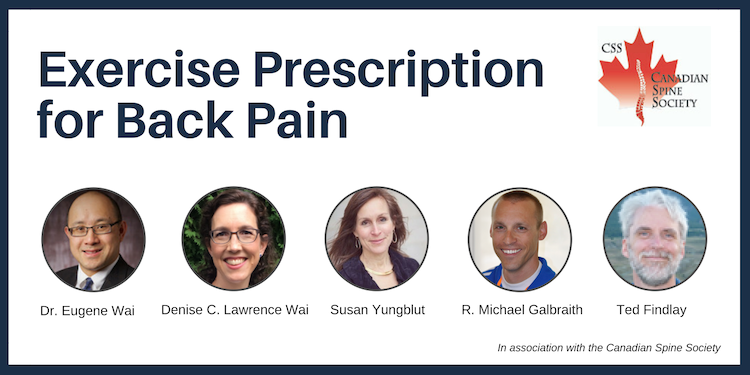1 is an orthopedic surgeon who specializes in the care of adult spinal disorders. He is also an Associate Professor in the Department of Surgery at the University of Ottawa. In addition he is the Research Chair for the Canadian Spine Society.
2Private practice Elite Sports Medicine in Lethbridge, AB.. Head Team Physician, Lethbridge Hurricanes (WHL). Clinical Lecturer, Dept of Family Medicine, University of Calgary School of Medicine.
3 is a Physical Therapist in Ottawa and a Research Assistant at The Ottawa Hospital.
4 Physiotherapist, Liquidgym, Ottawa; Nordic Walking Instructor and Urban Poling Master Trainer, OttawaNordicWalks; Past Director, Exercise is Medicine Canada
5 is a Clinical Assistant Professor in the Department of Medicine at the University of Calgary. He is also in a Private Family Medicine practice. In addition he is on Medical Staff at Alberta Health Services, Calgary Zone in Calgary, Alberta.
